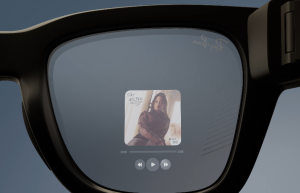A Twitter post showed Japan's newest aircraft carrier is just about ready to deploy, and the Chinese Navy is not happy with it.
The upcoming deployment of the first aircraft carrier in 75 years is a response to the growing Chinese threat in the East and South China Seas. A photo on Twitter shows the upgrades on the helicopter carrier Izumo, that is well-equipped to carry heavy aircraft as well. The upgrades are currently undergoing at the Japan Marine United shipyard in Yokohama, according to Forbes.
As far as the Chinese Navy is concerned, the upgraded Izumo is a threat, and sinking it will make dominating the sea lanes easier. Whether they succeed or not, that will incite serious trouble between the two nations.
One of the reasons for the $28 million upgrades for the Izumo is to strengthen the deck for fixed-wing operations as well. According to Japan Times, the new F-35B stealth jump jets or Vertical Take-Off and Landing (VTOL) is far superior than Chinese carrier aircraft.
To add to the headaches of the People's Liberation Army Navy (PLAN), the sister ship Kaga will be given the same upgrades. The total length of the two carriers is 814 feet long, 27,000 tons, but how many F-35B's it can load is still uncertain. U.S. Navy's America-class assault ships, with 45,000 tons will carry more than 12 F-35Bs on its deck.
Chinese analyst Fang Zheng ridiculed the capacity of Japanese flat tops, saying that a crow cannot beat a phoenix.
American naval experts give their comments on the comparison of Chinese and Japanese naval power. According to them, the Izumo and Kaga have different jobs, compared to the USS Ronald Reagan whose homeport is in Yokohama.
Also read: China Thinks US Navy's Three Aircraft Carriers Are Merely for Show, Although It Threatens Them
The two converted Heli-carriers are the best ships for anti-submarine warfare, whose role is to hold the line from the Philippines to Japan and destroy Chinese subs that will all attack ships. Should any Chinese sub get by, other ships will attempt to kill the intruder, as reported in Naval News.
Another Chinese analyst Yin He said the carriers are to defend the group from any attack from a defensive perimeter. This make commanding air superiority over the battlefield easier, which is often a problem for the limited range and loadout of Chinese carrier aircraft.
Yin He forgets that US fighters have range and carry more weapons, compared to Chinese carriers that only have ski ramp. This limits the claim that Chinese fighters can rule the air.
To offset the role of just sub-hunting, the Kaga and Izumo have the F-35B stealth VTOL that is not on the Chinese inventory. It has an operation range of 833km and 1,667km, which means it can loiter for other jobs near or far the Kaga and Izumo but Chinese planes need to resupply earlier. The F-35B will do air interdiction, and become ship killers too in combat. When the Japanese marines attack Chinese fortifications, the F-35Bs will act as suppressors or attack missile batteries.
The Chinese military has the DF-21D and DF-26 anti-ship ballistic missiles, from the Washington, D.C., Center for Strategic and Budgetary Assessment. They are used to sink ships and avoid a line of sight and prefer a beyond visual range conflict.
Their main targets are the USS Nimitz, USS Theodore Roosevelt, USS Ronald Reagan, but the Izumo and Kaga are tempting targets as well, according to former Japanese fleet commander Vice Adm. Makoto Yamazaki.
Next to the US 7th Fleet, Japan Maritime Self-Defense Force has the most destroyers with the Aegis air-defense system. The Chinese equivalent is even comparable to the Allied countries' defensive systems, like the SM-3 missile that stops Chinese anti-ship ICBMs.
© 2025 HNGN, All rights reserved. Do not reproduce without permission.








